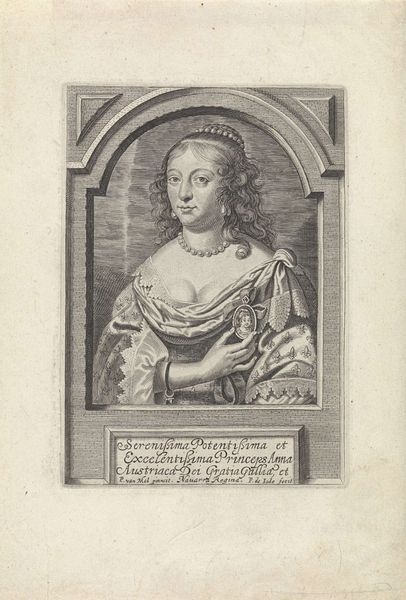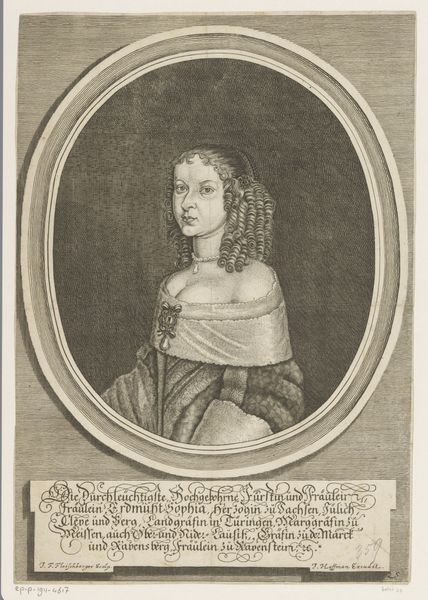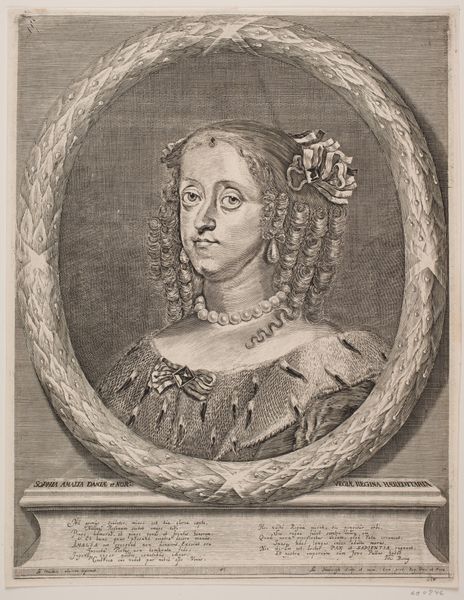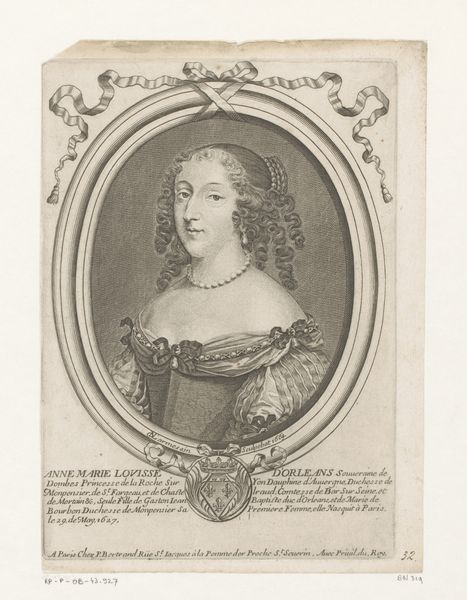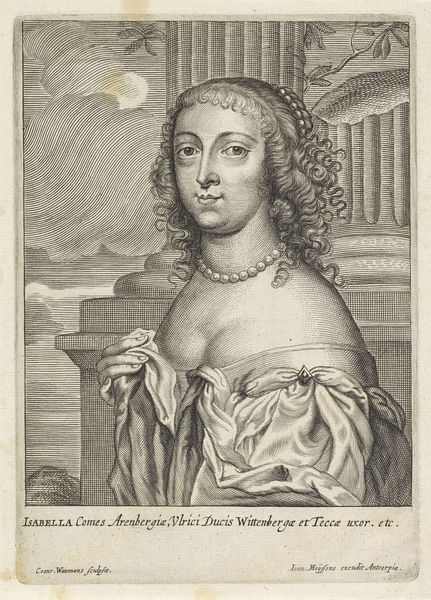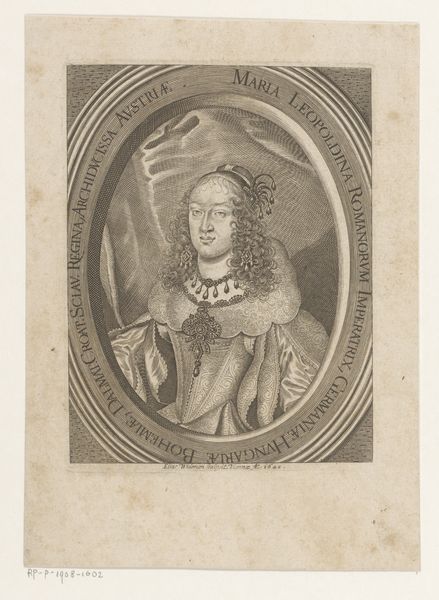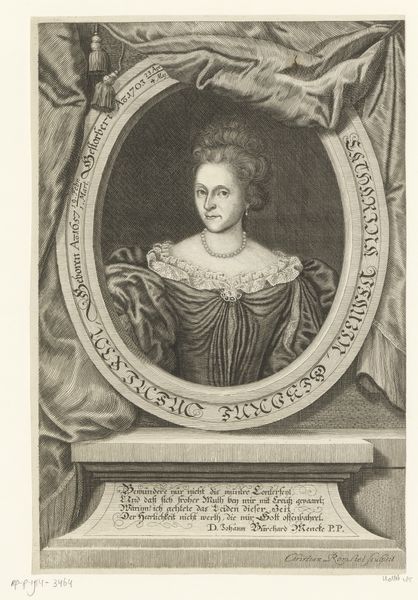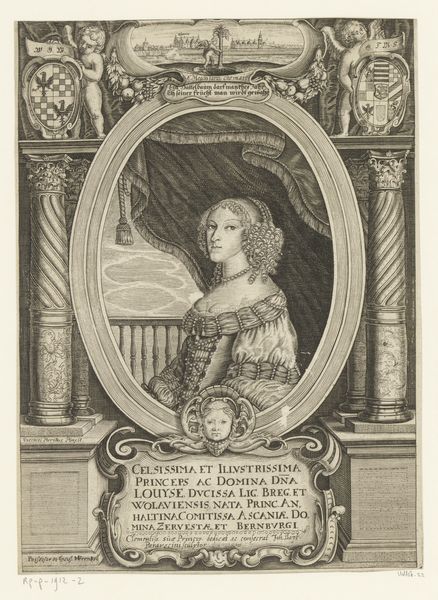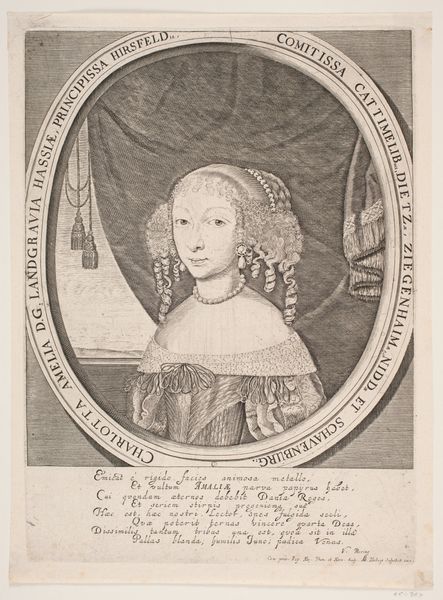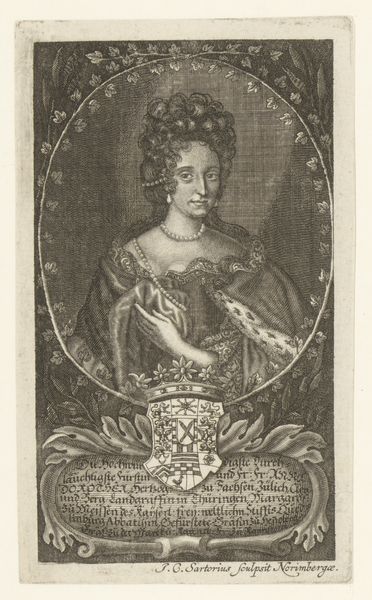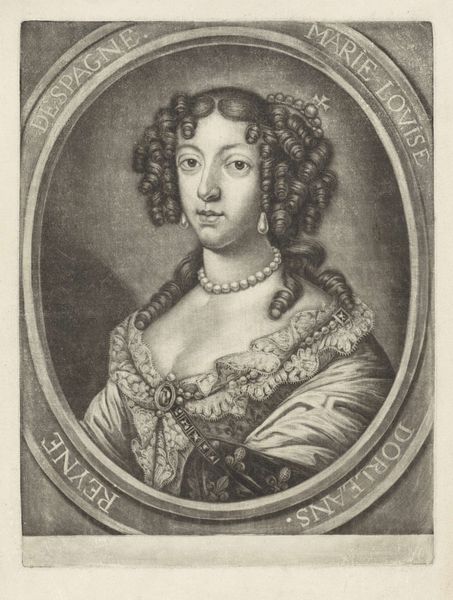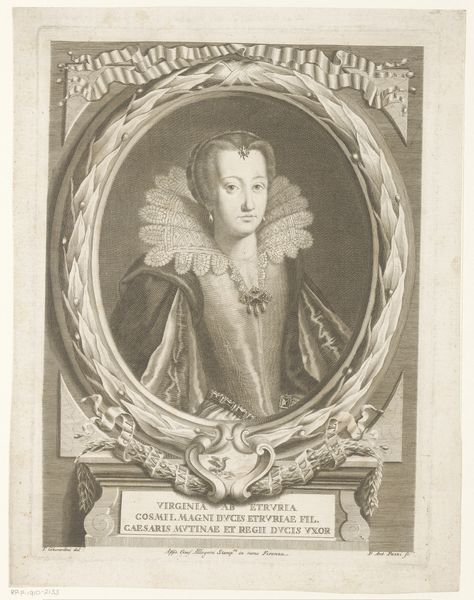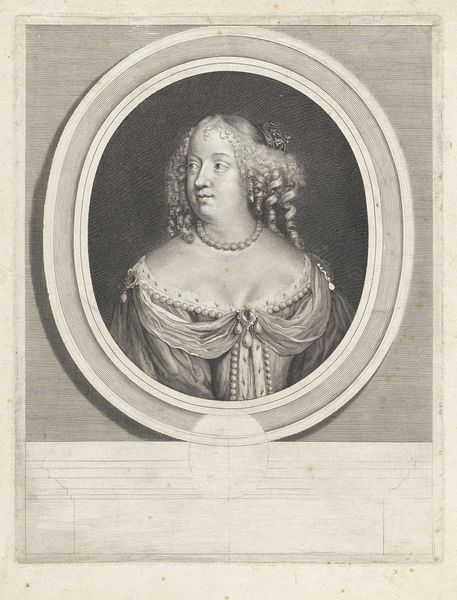
print, engraving
#
portrait
#
aged paper
#
baroque
# print
#
old engraving style
#
pencil drawing
#
history-painting
#
engraving
Dimensions: height 173 mm, width 119 mm
Copyright: Rijks Museum: Open Domain
Editor: This engraving, "Portret van Theodore Gertrude de Kettler," dating from around 1645 to 1681, is currently held at the Rijksmuseum and was created by Edme de Boulonois. It gives a real sense of formality; she seems very aware of her status. What do you see in this piece, beyond just a portrait? Curator: The image carries the weight of societal expectations and the desire for enduring legacy. Her presence is framed by an oval, and behind her we see a window partially hidden behind a curtain with heavy folds: she is shown and hidden at the same time, a suggestion of modesty and perhaps vulnerability but also a display of richness and fabrics. Above the portrait we notice an armorial achievement, signifying her family lineage and social rank, and linking it with tradition and history. It gives us another layer into what symbols meant during that time. What do you think of the gaze? Editor: I see that now. The shield reinforces that idea of social standing and a sense of tradition. Her gaze feels almost confrontational, which contrasts with the lace and delicate details in her clothing. It’s like she is actively participating in how she is being presented. Curator: Exactly! The symbols are not merely decorative, but active participants in constructing her identity. Consider, too, the permanence implied by an engraving versus a painting. It implies the intention to project this image, her self-constructed identity, into the future. Do you see how the act of creating a print carries that deeper resonance? Editor: Absolutely, engraving solidifies the message! I hadn't thought about how the medium itself becomes part of the symbolism. Curator: It all works together, like the parts of a play coming together, doesn’t it? The texture, composition and her gaze were intentionally part of the language. We can continue decoding symbols if we look closer, but I find that looking at those elements offers great lessons about how people saw the world then. Editor: I’m glad we took a closer look at it beyond just a face on paper. Curator: Me too! I learned to look at symbols and engravings through a different perspective and connect them to a purpose.
Comments
No comments
Be the first to comment and join the conversation on the ultimate creative platform.
